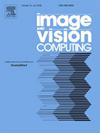UniFormer: Consistency regularization-based semi-supervised semantic segmentation via differential dual-branch strongly augmented perturbations
IF 4.2
3区 计算机科学
Q2 COMPUTER SCIENCE, ARTIFICIAL INTELLIGENCE
引用次数: 0
Abstract
Consistency regularization is a common approach in the field of semi-supervised semantic segmentation. Many recent methods typically adopt a dual-branch structure with strongly augmented perturbations based on the DeepLabV3+ model. However, these methods suffer from the limited receptive field of DeepLabV3+ and the lack of diversity in the predictions generated by the dual branches, leading to insufficient generalization performance. To address these issues, we propose a novel consistency regularization-based semi-supervised semantic segmentation framework, which adopts dual-branch SegFormer models as the backbone to overcome the limitations of the DeepLabV3+ model, termed UniFormer. We present a Random Strong Augmentation Perturbation (RSAP) module to enhance prediction diversity between the dual branches, thereby improving the robustness and generalization performance of UniFormer. In addition, we introduce a plug-and-play self-attention module that can effectively model the global dependencies of visual features to improve segmentation accuracy. Extensive experiments demonstrate that the proposed method achieves state-of-the-art performance on most evaluation protocols across the Pascal, Cityscapes, and COCO datasets. The code and pre-trained weights are available at: https://github.com/qskun/UniFormer.
UniFormer:基于一致性正则化的半监督语义分割,基于差分双分支强增广扰动
一致性正则化是半监督语义分割领域的一种常用方法。最近的许多方法通常采用基于DeepLabV3+模型的双分支结构和强增摄动。然而,这些方法受到DeepLabV3+接受域的限制以及双分支生成的预测缺乏多样性的影响,导致泛化性能不足。为了解决这些问题,我们提出了一种新的基于一致性正则化的半监督语义分割框架,该框架采用双分支SegFormer模型作为主干,克服了DeepLabV3+模型的局限性,称为UniFormer。提出了一种随机强增强扰动(RSAP)模块来增强双支路之间的预测多样性,从而提高了UniFormer的鲁棒性和泛化性能。此外,我们还引入了一个即插即用的自关注模块,该模块可以有效地对视觉特征的全局依赖性进行建模,以提高分割精度。大量的实验表明,所提出的方法在Pascal、cityscape和COCO数据集的大多数评估协议上都达到了最先进的性能。代码和预训练的权重可以在https://github.com/qskun/UniFormer上获得。
本文章由计算机程序翻译,如有差异,请以英文原文为准。
求助全文
约1分钟内获得全文
求助全文
来源期刊

Image and Vision Computing
工程技术-工程:电子与电气
CiteScore
8.50
自引率
8.50%
发文量
143
审稿时长
7.8 months
期刊介绍:
Image and Vision Computing has as a primary aim the provision of an effective medium of interchange for the results of high quality theoretical and applied research fundamental to all aspects of image interpretation and computer vision. The journal publishes work that proposes new image interpretation and computer vision methodology or addresses the application of such methods to real world scenes. It seeks to strengthen a deeper understanding in the discipline by encouraging the quantitative comparison and performance evaluation of the proposed methodology. The coverage includes: image interpretation, scene modelling, object recognition and tracking, shape analysis, monitoring and surveillance, active vision and robotic systems, SLAM, biologically-inspired computer vision, motion analysis, stereo vision, document image understanding, character and handwritten text recognition, face and gesture recognition, biometrics, vision-based human-computer interaction, human activity and behavior understanding, data fusion from multiple sensor inputs, image databases.
 求助内容:
求助内容: 应助结果提醒方式:
应助结果提醒方式:


